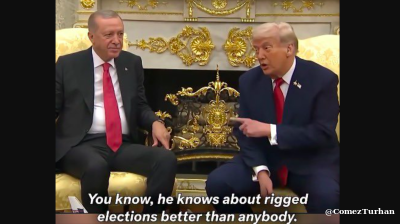As the conflict between Israel and Iran continues to unfold, the geopolitical uncertainty has prompted wide-ranging assessments of how it might play out. Analysts at Capital Economics have outlined four plausible scenarios, each with markedly different implications for the Middle East, global energy markets and international financial systems.
“The key takeaway is that even in the event of escalation, the range of outcomes remains wide — from short-term military engagement to regime change or prolonged conflict,” the firm said in a note published on June 18. “We may not know the endgame for some time.”
Scenario one, their current working assumption, envisions the conflict de-escalating within weeks. Israeli officials have signalled this possibility, suggesting that once military objectives are achieved, hostilities may subside. In this case, Iran’s regime would remain in place but with a weakened military posture, while sanctions would continue. “Oil prices would return to pre-conflict levels — around $65 per barrel — and safe haven flows in financial markets would unwind,” Capital Economics noted.
Scenario two assumes a more intense military escalation. If Israel expands its operations and Iran retaliates — potentially targeting US forces or threatening to close the Strait of Hormuz — the economic fallout could be sharp but short-lived. “Oil prices could feasibly spike to $130–150 per barrel, equities would fall, and the dollar would strengthen,” the analysts said. “However, these moves would subsequently reverse if a peace deal is reached, possibly paving the way for a new nuclear agreement.”
Scenario three explores posits a regime change in Iran, triggered by intensified conflict and mounting domestic pressure. In its most optimistic form, reformist elements within Iran’s establishment could gain power and seek rapprochement with the West. “Such a shift could ultimately lead to the lifting of sanctions and a return of foreign investment,” the firm said, adding that this outcome would likely be positive for risk assets and energy prices could stabilise at lower levels.
However, Capital Economics also flagged less favourable permutations — from hesitant leadership transitions to disorderly change — that could still reduce Iran’s ability to sustain hostilities. “In any of these situations, we suspect Iran would seek to extricate itself from conflict with Israel or the US,” the analysts wrote.
Scenario four, the most disruptive, involves a protracted conflict with no diplomatic exit. The Iranian regime would suppress domestic dissent and continue hostilities, while regional security deteriorates. “This scenario might result in a long-lasting higher oil price in the range of $130–150 per barrel,” Capital Economics warned. “It could lift inflation in advanced economies by 2–2.5 percentage points by the end of 2025 and would be a major risk-off event in markets.”
In all scenarios, Capital Economics says that energy markets will bear the brunt of instability.
“The outcome of this conflict will shape regional dynamics and global market sentiment for months, if not years, to come,” they concluded.
|
Table 1: Iran-Israel Scenarios & Implications |
||||
|
Scenarios |
Implications for the |
Implications for |
Implications for the |
Implications for |
|
1. Conflict dies down within a few weeks |
Gulf oil production continues to rise at the pace that has been set out by OPEC+. A return to a conflict predominantly located in Gaza will mean the shipping disruption and security fears persist. Balance of payments strains will persist in Jordan and Egypt. |
Risk premium in oil prices remains around its current levels throughout the conflict and prices return to where they were pre-conflict (~$65 pb) as it dies down. |
If oil prices were to remain around $65pb then energy inflation would have little bearing on headline inflation in advanced economies this year. Headline inflation would remain around 2% targets in most DMs. |
Some further volatility and limited safe-haven flows in the near term, which unwind once the conflict starts to tail off. |
|
2: Conflict intensifies. Iran seeks an end to hostilities |
Balance of payments strains intensify in parts of North Africa and Levant, putting pressure on currencies. Gulf oil output under threat of Iranian retaliatory strikes, possibly forced to re-route oil exports away from the Strait which may weigh on hydrocarbon export volumes. |
Oil prices could feasibly spike to somewhere in the region of $130-150pb in this scenario were Iran to shut the Strait of Hormuz and/or attack US military assets. For how long prices remain that elevated depends on how long-lasting the negative impacts on oil market fundamentals would be. |
A jump in oil prices to $130-150pb, if sustained for the remainder of the year, would lift inflation in advanced economies by 2-2.5%-pts by end-2025. If prices fell back quickly, central banks would “look through” this temporary rebound in inflation. If not, then a rise inflation this significant would be harder for central banks to ignore, particularly if they had second round effects. |
Increased volatility and safe-haven flows in the near term; a further 3-5% drawdown in major equity indices and 2-3% rise the DXY index. These moves unwind once peace breaks out. |
|
3: Regime change |
In a benign outcome, higher Iranian oil output might limit the extent to which the Gulf raises production and also weigh on prices. That would prolong fiscal consolidation for the likes of Saudi Arabia, Bahrain, and Oman. |
At the most benign end, oil prices could fall back to $65pb in the short-term and, to the extent that Iranian oil and gas exports might increase over time, energy prices could eventually settle lower than otherwise would be the case. At the other end of the spectrum, some risk premium in oil prices could remain due to lingering uncertainty around Iran’s production and shipping in the region. |
In a benign scenario where energy prices settled lower than otherwise would be the case, inflation in advanced economies could be perhaps 0.5%-pts lower by end-2025. A more adverse scenario where some risk premium remained means inflation would probably be a few tenths of a percentage point higher by end-2025. |
At the benign end of this scenario, this could be small net positive for both risky assets and bonds (relative to 12th June) if risk premia in oil markets fall back and sentiment globally improves. In the more adverse outcomes, the market impact would be net negative – along the lines of scenarios 1 & 2, but potentially more persistent if uncertainty around Iran’s future and its impact on energy markets lingered. |
|
4: Long-lasting conflict with no off-ramp |
A closure of the Strait of Hormuz and/or the risk of the conflict spilling into neighbouring countries and hitting oil infrastructure poses major downside risks to the Gulf economies. |
If Iran internationalises the cost of the conflict via blocking the Strait of Hormuz, oil prices could rise to $130-150pb and, crucially, remain at these levels for a longer duration relative to scenario 2. |
A long-lasting higher oil price in the range of $130-150pb would lift inflation in advanced economies by 2-2.5%-pts by end-2025. Disruptions to shipping through the Strait of Hormuz could lead to higher shipping costs. But this would only have a small positive impact on global inflation. |
Significant risk-off event; a further 10%+ drawdown in major equity indices and a 5-10% rise the DXY index. While these moves partly unwind as economies and markets adjust to the energy price shock, most major equity indices end the year lower than their current levels |
|
Source: Capital Economics |
||||
Opinion

COMMENT: Hungary’s investment slump shows signs of bottoming, but EU tensions still cast a long shadow
Hungary’s economy has fallen behind its Central European peers in recent years, and the root of this underperformance lies in a sharp and protracted collapse in investment. But a possible change of government next year could change things.

IMF: Global economic outlook shows modest change amid policy shifts and complex forces
Dialing down uncertainty, reducing vulnerabilities, and investing in innovation can help deliver durable economic gains.

COMMENT: China’s new export controls are narrower than first appears
A closer inspection suggests that the scope of China’s new controls on rare earths is narrower than many had initially feared. But they still give officials plenty of leverage over global supply chains, according to Capital Economics.

BEYOND THE BOSPORUS: Consumed by the Donald Trump Gaza Show? You’d do well to remember the Erdogan Episode
Nature of Turkey-US relations has become transparent under an American president who doesn’t deign to care what people think.



